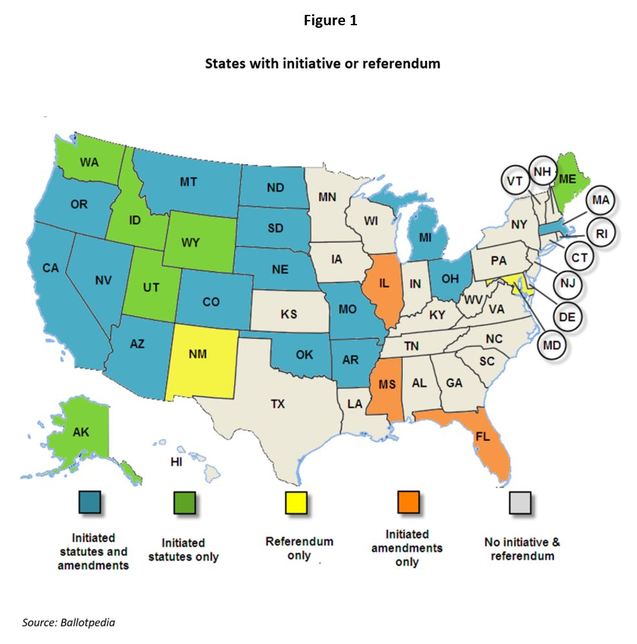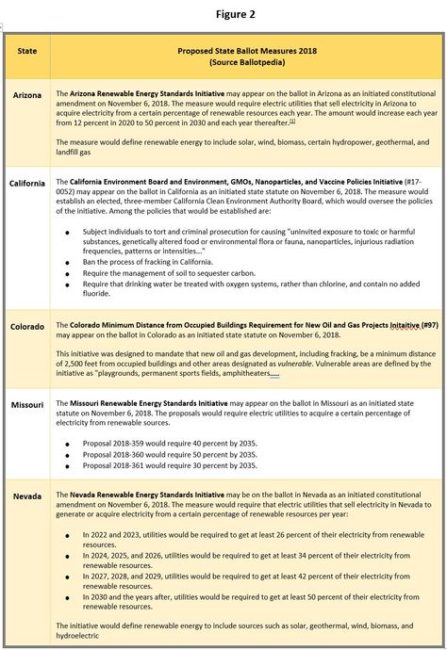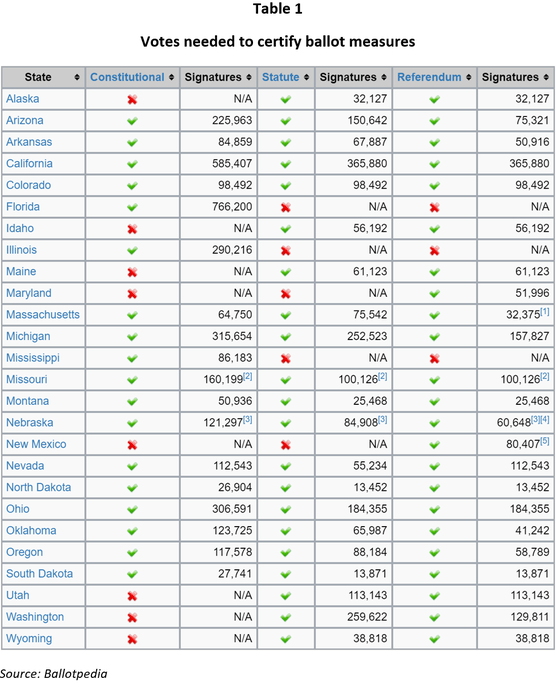Wouldn’t it be great if we could put questions of climate policy directly to voters? It would be like an opinion pool with teeth and consequences.
—J Bernard
In the US, the 2016 election of President Trump and Republican congressional majorities has made crystal clear the vulnerability of federal climate policies and programs to shifting political winds. Hardly a secret, the partisan nature of the global warming debate has never been as much in evidence as it is today.
The climate-science community now anticipates the world crossing the 1.5-degree threshold sometime around 2040—60 years ahead of the Paris climate accord’s (Accord) end of century target. A record hardly to be proud of but one which it is essential to keep in mind.
At a time when emission reductions need speeding up, the US is being led by a president and political party in denial; a group foppishly opposed to environmental regulation and committed to coal and other fossil fuels contrary to the interests of the environment and the economy.
Resistance to the Administration’s rollback of existing environmental protections to an earlier time travels two primary paths:
- Direct lobbying of members of Congress and the Administration (Plan A); and
- The filing of a growing number of climate-related lawsuits against the actions of the Administration, e.g., summary suspension of an existing regulation without first following established legal procedures (Plan B).
Plans A and B have successfully slowed some of the Administration’s more egregious efforts to revise and rescind existing environmental protections. The attempts of EPA Administrator Pruitt and Secretary of the Interior Zinke to summarily suspend rules governing methane and auto emissions, for example, have been rebuffed by the courts.
The courts’ orders in these cases are keeping the rules alive but only for as long as it takes the agencies to follow the process laid out by Administrative Procedures Act. At the end of the process, Pruitt and Zinke will do what they had originally set out to do with Trump’s continued blessing.
From a climate perspective, the nation needs more than a drag on the Trump administration to re-establish a proactive federal agenda for combatting global warming. If dead-weight were all that was required, then the nation is well-served by the current, and continuing Congressional gridlock and the 2018 mid-terms would make no difference.
Plans A and B are vulnerable to countermeasures. Direct lobbying of Congress and the Administration only seems to work for fossil fuel companies and sniff-tested and approved conservative policy mavens like Myron Ebell of the Competitive Enterprise Institute.
Lawsuits by their nature take time—a lot of it. Court procedures, crowded dockets, and the right to appeal lower court decisions—both procedural and substantive—can easily add up to a case being in the system for 5 to 7 years. For Constitutional rights cases like Massachusetts v EPA and Juliana v US that inevitably find their way to the US Supreme Court (SCOTUS), the longer time-frame is almost guaranteed.
As I discussed in Part 1, sweeping court decisions have other limitations as well. Compliance will often require drafting and implementing a new regulatory framework. Eight years passed between the time SCOTUS confirmed EPA’s authority to regulate GHGs it found to cause climate change until the publishing of the Draft Final Clean Power Plan (CPP). The final fate of the CPP is still not known.
Sweeping judicial opinions, i.e., those that might lead to the regulation of multiple sectors or significant cash settlements, run the risk of being unenforceable because of conflicts with other government mandates, a lack of sufficient funds in the case of state governments and the potential bankruptcy in the case of corporate offenders. The Sinnok (Alaska) and Reynolds (Florida) state cases referenced in Part 1 are illustrations of the problem.
Such broadly impactful directives could also cause the legislative branch to amend or rescind the original legislation and can risk curtailment of judicial review authorities. The courts are not immune from legislative efforts to limit their powers.
A Democratic takeover of the House, as is increasingly being forecast, would serve to offset some of the Administration’s more egregious attacks on existing environmental protections and federal climate-related research and development programs. Even a Democratic sweep of Congress in the 2018 and of Congress and the White House in 2020, however, will not begin to make-up for lost time much before mid-2023.
There is no reason to believe that the on-again/off-again cycle of federal environmental protections and clean energy support programs won’t just continue to repeat itself well into the next decade. A swapping out of Democrats for Republicans at both ends of Pennsylvania Avenue will just be part of the partisan cycle. Neither will a Democratic White House and Congress staunch the flow of lawsuits; today’s plaintiffs will become tomorrow’s defendants—just as they were during the Obama administration.
To break the cycle requires paving new paths of advocacy and resistance; trails that will parallel lobbying and lawsuits in pursuit of the common objective. A Plan C if you will.
What is Plan C?
Plan C is a concerted effort to encourage and support the use of ballot measures allowing voters to have a direct say in the climate-related laws and policies of their states. Ballot initiatives are as close to a pure democratic practice as one is likely to find. Interestingly this form of democratic decision making has historically enjoyed the support of progressives and populists alike. I dare say, it may be one of the very few concepts these days that has any chance of appealing to both Republicans and Democrats.
Ballot measures come in various sizes and guises—some amend a state’s constitution. Others involve passing a statute the legislature failed to muster the needed votes for or to rescind a law that was passed but is hugely unpopular. In some states, citizens can circumvent their legislatures by drafting their own legislation and getting enough signatures to place it on the next general election ballot.
The basic concept of ballot initiatives is reasonably straightforward. The particulars can be a bit complex. The following paragraphs offer an overview of their character in the US and a glimpse into how initiatives have been used in the past and could be used by clean energy and climate advocates in the future.
The lack of a federal corollary does not diminish the value that ballot measures can add to other advocacy forms. Success at the state and local levels will not be lost on members of Congress and the president. Ballot initiatives are not just a purer form of democracy; they are close to teleological perfection.
The use of initiatives and referendums predates the US. According to Ballotpedia:
Various forms have existed in the United States since the 17th century, beginning in New England, where ordinances and other issues were listed on town hall meeting agendas. The voting within these town hall meetings established a precedent for the legislative referendum process, which allows citizens to ratify laws and amendments proposed by their elected officials.
The first state to hold a statewide legislative referendum was Massachusetts in 1778. The referendum was used to ratify the state constitution. Other colonial period adopters were New York, New Hampshire, Connecticut, Maine, and Rhode Island.
Jefferson had proposed writing legislative referendum into the Virginia constitution in 1775. It was defeated in part because he was unable to participate in the debate due to a prior engagement in Philadelphia at the Continental Congress.
Both Jefferson and Madison believed firmly in the concept. Jefferson had a great deal of faith in people and thought the governed had the right to agree upon and approve changes to laws. Madison shared his colleague’s belief in popular government, writing:
As the people are the only legitimate fountain of power, and it is from them that the constitutional charter, under which the several branches of government hold their power, is derived, it seems strictly consonant to the republican theory to recur to the same original authority … whenever it may be necessary to enlarge, diminish, or new-model the powers of government.
There are different types of ballot measures; they are categorized based on their purpose. The measures also vary in their paths to get on to a ballot. (Figures 1 and 2) The three common classes of ballot measures according to the National Conference of State Legislatures.
Initiatives are a process that enables citizens to bypass their state legislature by placing proposed statutes and, in some states, constitutional amendments on the ballot.
There are three types of initiatives: direct, indirect, and advisory. In the direct process, proposals that qualify go directly on the ballot. In the indirect process, the proposal is submitted to the legislature for adoption. Depending on the state, the initiative will only go on the ballot if the legislature rejects it, submits a different proposal or takes no action. In some states with the indirect process, the legislature may submit a competing measure that appears on the ballot along with the original proposal.
The advisory referendum is rarely used. In this form of the process, the legislature, and in some states the governor, may place a question on the ballot to gauge voter opinion. The results of the election on this question are not binding.
There are 24 states with an initiative process.
Referendum are categorized into two primary types. The legislative referendum, whereby the legislature refers a measure to the voters for their approval, and the popular referendum, a measure that appears on the ballot via a voter petition drive.
Legislative referendum may appear on the ballot in all 50 states. Twenty-four (24) states have the popular referendum. Most of them are also initiative states.
Recall is a procedure allowing citizens to remove and replace a public official before the end of a term of office. Recall differs from another method for removing officials from office – impeachment – in that it is a political device while impeachment is a legal process. (See Figure 1)
There are conflicting opinions about the popularity of ballot measures. In 2016, 71 measures made it onto the state ballots—more than double the amount in 2014 and a break of the downward trend that began in 2006. The 2016 class of initiatives were distinctive because they included fewer constitutional amendments focusing more on statutes and policies.
To-date Ballotpedia identifies 68 certified measures likely to be on November ballots. Of those measures, 15 are citizen-initiated. Although already near the 2016 total with some months to go before the November elections, the 2018 number is below the 97 expected overall.
With so few data points it is hard to determine the direction of the trend line. A rising line is expected as a result of voter frustration with the gridlock happening at the state and federal levels.
Justine Sarver, the executive director of the progressive Ballot Initiative Strategy Center, offers both a good news and bad news explanation of what we’re seeing today.
The good news versionis I would say we are seeing an increase in the number of proactive, progressive initiatives in this decade…whether that’s around health, criminal justice, redistricting, and the economy, or [reforms] relevant to democracy.
The bad news is the ballot-measure process is under attack…There were many successful measures in 2016, and we’re seeing many conservative governors saying, “I’m not going to implement that.”
A recent example of an attack by a conservative was Governor LePage’s response to successful Medicaid-expansion and cannabis-legalization referenda in Maine. LePage led the charge to blunt the effectiveness of the tool itself. According to the Governor “Referendum is pure democracy, and it has not worked for 15,000 years.”
LePage is not alone in his efforts to push back ballot measures. Vann Newkirk writes in the Atlantic that, “Arizona’s legislature has passed a series of laws over the past four years sharply curtailing citizen initiatives, and in 2017, Michigan passed a law tightening the time window for gathering names.”
The pushback by Republican governors and legislatures can as easily be interpreted as a good news story. Michigan’s Voters Not Politicians campaign started as a Facebook post and ended up gathering 425,000 signatures in 110 days from all 83 of the state’s counties.
The campaign describes itself as a nonpartisan, grassroots group leading the charge to fix Michigan’s broken redistricting process through a constitutional amendment to establish a citizen-led redistricting commission. The gerrymandering of voting districts in favor of the sitting legislative majority is an issue of growing concern of both populists and progressives.
Such pent-up voter frustration could well be worrying Republican governors and legislators to the point of proposing legislation to limit the use of initiatives and referendum. Other popular subjects of the current crop of budget measures include the expansion of Medicaid, school-budget increases, and marijuana legalization.
Although not nearly as popular as marijuana legalization, there are five clean energy and environmental measures that may be on several state ballots come November. Three of the five involve renewable energy standards. Of the five, three would add amendments to the state’s constitution. Figure 2 below identifies by state the likely 2018 climate-related measures that will find their way onto the November ballots. There is still time for others to be added.
All the measures in Figure 2 are still waiting to be certified for placement on the November ballot. The California measure has been given the go-ahead to collect the needed signatures.
Two notable clean energy ballot measures in 2016 involved solar rooftop systems and the levying of a state carbon tax. Florida voters rejected a utility-backed measure to amend the state’s constitution. Hailed by the utilities as an important support for solar and dubbed Amendment 1: Solar Energy Equipment Rights, the measure would have been used to raise fees on system owners and cut down on competition for the utility.
A case of untruth in advertising, the measure was defeated largely through the efforts of a bipartisan coalition of solar advocates, manufacturers, and environmental organizations. The Floridians for Solar Choice also included tea party organizations—showing once again that there are areas of common interest on both sides of the political aisle.
The Washington proposal was defeated because of the opposition of environmental justice advocates to how the proceeds of the tax would be spent. Environmental advocates argued the measure would work against working people and the poor.
Under the heading of politics making for strange bedfellows, environmental opponents of the tax found themselves aligned with coal interests who were opposed to the tax because of what it would do to their sales. The Washington experience also speaks to the importance of phrasing and the need to vet proposals before they are printed on the ballot.
Perhaps it’s just my warped perception of politics, but I see these somewhat odd alliances between traditional climate-science and defenders as evidence of the potential of ballot measures. It appears that partisan divide can be crossed through these campaigns.
There are several other reasons for the climate and clean energy communities to consider ramping up citizen initiatives and referendum. First, the procedure for getting a citizen-inspired measure on the ballot doesn’t require a huge number of signatures in relative terms.
Many of the requirements are based on a percentage of the number of overall votes in the last election. Table 1 shows the number of signatures needed to qualify a measure for certification in initiative and referendum states. Colorado, for example, requires 88,492 squiggles in a state with a voting-age population of 4,109,494.
Second, ballot measures show actual voter commitment for clean energy development and environmental protections in a way no other means is nearly able to do. The commitment is symbolized by the signing of a petition and the casting of a ballot. The physicality of the two acts distinguishes them from answering poll questions in one’s living room. It’s not an idle distinction.
Tens of thousands of physical signatures and potentially millions of votes are the hard currencies of the political economy.
Of all the reasons there are for a state ballot measures campaign the best is the “strange bedfellow” syndrome previously mentioned. Hyper-partisanship is killing forward progress in the effort to combat global warming.
Ballot initiatives appear a potential haven for bi-partisan collaboration. There is any number of reasons why this might be so. For example, the measures are local, rather than national. Collecting signatures is a neighbor-to-neighbor undertaking and collaboration is personal.
The subjects of initiatives and referendum are concrete rather than theoretical. When asking someone for their signature on a petition and their vote on election day political philosophies don’t come into the conversation—at least they needn’t.
An initiative to close down a dump site polluting a town’s water supply is about protecting families and friends from being poisoned. It is not about whether they think Donald Trump is an idiot or a genius. There are otherwise too few opportunities for civil cross-aisle conversations. Ballot measures that attract supporters from the right and the left show a much higher rate of approval.
Although the discussion has focused on state initiatives and referendum, it should be noted that citizen-led ballot measures are also eligible to be placed on many city and county ballots. A discussion for another day.
Finally, the lack of a federal corollary does not diminish the value that ballot measures can add to other advocacy forms. Success at the state and local levels will not be lost on members of Congress and the president. Ballot initiatives are not just a purer form of democracy; they are close to teleological perfection
Make no mistake ballot measures are no more a quick fix for what is ailing the environment and threatening communities than lawsuits and direct lobbying. Are they worth the effort? I believe they are.
Governor LePage was right about one thing Referendum [is] pure democracy. Unlike LePage, however, I see citizen-initiatives through Madison’s eyes as being strictly consonant to the republican theory to recur to the same original authority … whenever it may be necessary to enlarge, diminish, or new-model the powers of government.
Joel Stronberg, Esq., of The JBS Group is a veteran clean energy policy analyst with over 30 years’ experience, based in Washington, DC.
This article was originally published by the Civil Notion Blog.
The MAHB Blog is a venture of the Millennium Alliance for Humanity and the Biosphere. Questions should be directed to joan@mahbonline.org
The views and opinions expressed through the MAHB Website are those of the contributing authors and do not necessarily reflect an official position of the MAHB. The MAHB aims to share a range of perspectives and welcomes the discussions that they prompt.



